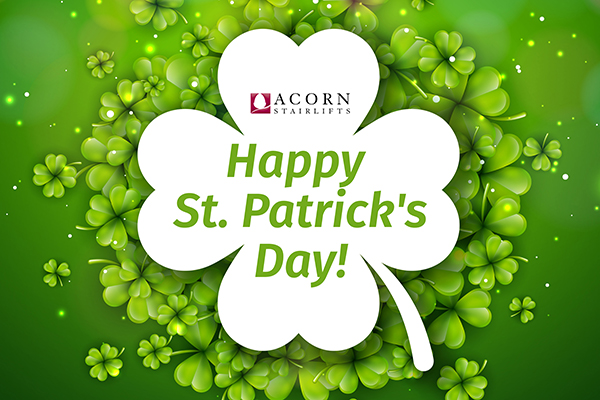From guzzling a couple of beers in an Irish pub decked out in green St. Patrick’s Day decorations to feasting on the delicious, traditional meal of corned beef and cabbage, St. Patrick’s Day is a fun and festive day for people all over the world, whether you were blessed with the luck of the Irish or not.
Sure, you may think you're a St. Patrick's Day expert, but hold onto your shamrocks because there's a lot more to this holiday than meets the eye!
As we gear up for St. Patrick's Day 2024, get ready to uncover seven hidden treasures of knowledge about this festive occasion that might just surprise you.
From intriguing historical anecdotes to fun facts about traditions, these fascinating nuggets of information are pure gold and guaranteed to add extra sparkle to your celebrations!
What is St. Patrick’s Day?
Today, St. Patrick’s Day is a well-known Irish holiday celebrated all over the world.
Although the holiday’s roots are religious, over time, the holiday has morphed into a celebration of Irish culture that people of all religions and backgrounds can be a part of.
The holiday is often associated with the colour green, leprechauns, shamrocks and four-leaf clovers, pots of gold, and the luck of the Irish.
It is often celebrated in the forms of wearing green, feasting on traditional Irish foods, listening to Irish music, hosting vibrant parades and social events, partying, drinking, and encouraging children to be on the lookout for mischievous, little, bearded men from Irish folklore, also known as leprechauns.
When Is St. Patrick’s Day 2024?
St. Patrick’s Day is on 17 March every year. This year, in 2024, St. Patrick’s Day is on a Sunday.
Why Do We Celebrate St. Patrick’s Day?
The celebration of St. Patrick’s Day originally began as a religious holiday with the purpose of honoring Saint Patrick, the saint associated with the arrival of Christianity in Ireland.
The day of March 17 marks the death of St. Patrick and was made an official holiday in the 17th century by the Catholic Church, as well as an official public holiday in Ireland in 1903.
St. Patrick’s Day, also known as The Feast of St. Patrick, has historically been celebrated through indulgence with sermons, drinking, and feasting, as Catholic Lent restrictions were lifted just for this day.
This is why St. Patrick’s Day is still heavily associated with feasts and alcohol consumption today—Although, during a short period from 1903 to 1970 in Ireland, it was considered a dry, religious holiday in which all pubs were closed.
7 Fun and Fascinating St. Patrick’s Day Facts
1. Saint Patrick was not even Irish!
Shocking, right?
As it turns out St. Patrick is actually British, arriving in Ireland as a slave and eventually becoming Ireland’s first Catholic missionary.
Better yet, his real name wasn’t even Patrick—It was Maewyn Succat.
In fact, legend says that he didn’t change his name to Patricius (Patrick) until he became a priest.
Call me closed-minded, but St. Maewyn’s Day just doesn’t have the same ring to its name as St. Patty’s Day.
2. The original colour associated with St. Patrick’s Day was sky blue.
Although it’s hard to picture the holiday any other way, the original colour associated with St. Patrick’s Day was “St. Patrick’s blue,” a light shade of sky blue.
It only began to change to green in the 18th century when Irish revolutionary groups sported the colour during the Irish independence movement.
Now, the colour green is linked to Ireland in many ways such as its appearance in the Irish flag and Ireland’s renowned nickname of the “The Emerald Isle” due to its gorgeous, green landscapes.
3. The shamrock—One of the most common symbols of St. Patrick’s Day—has a deeper significance than you think.
Beyond its tie to good luck, one of the most common symbols of St. Patrick’s Day, the shamrock, has much more significance behind it than you may know.
Shamrocks, or three-leaf clovers, have been considered the national symbol of Ireland for centuries.
Known as “seamroy” by the Celts, this plant was considered to be sacred, symbolising the arrival of spring.
It is even believed that Saint Patrick used it during his sermons to explain the concept of the Holy Trinity when he was first introducing Christianity to Ireland.
Bonus Fact: Did you know that finding a four-leaf clover really is lucky? Experts have confirmed that the chances of finding one are 1 to 10,000.
4. On St. Patrick’s Day, as many as 13 million pints of Guinness beer are consumed worldwide.
Everybody knows that the world-famous Guinness beer is Irish, but did you know that on St. Patrick’s Day, as many as 13 million pints of Guinness beer are consumed worldwide across 150 different countries?
This is a whopping 819% more Guinness than on a normal day.
I’ll drink to that—Bottoms up!
5. Leprechauns are creatures that have long been a large part of Irish culture and folklore.
The mischievous, little fairies, also known as leprechauns, are associated with St. Patrick’s Day because of their long-standing role in Irish culture and folklore.
In fact, the original Irish name for these famous folklore figures is “lobaircin,” which translates to “small-bodied fellow.”
The belief of Leprechauns likely stems from the Celtic belief in fairies—magical beings who could use their power to serve good or evil.
According to Celtic folklore, leprechauns were considered to be cranky creatures who were responsible for mending the shoes of the other fairies.
With that kind of job, it’s no wonder why they were so cranky!
6. Contrary to its name, the traditional St. Patrick’s Day meal of corned beef and cabbage doesn’t actually contain any corn.
You read that right—The St. Patty’s Day staple dish of corned beef and cabbage has nothing at all to do with corn.
The name “corned beef” refers to the large grains of salt that were historically used to cure meats. These large grains of salts were known as “corns.”
Furthermore, this iconic meal was actually an American innovation.
Because, traditionally, ham and cabbage were eaten in Ireland, poor Irish immigrants living in the slums of lower Manhattan used corned beef as a cheaper substitute for the ham to feel more connected to their homeland.
During the late 19th century and early 20th century, Irish Americans would purchase the leftover corned beef from ships that were returning from the tea trade in China.
The Irish then followed a process in which they would boil the beef three times—the last time with cabbage—so that they could remove some of the brine.
7. On St. Patrick’s Day, countries all over the globe will go green—literally!
Ireland is not the only place where you can be surrounded by green on St. Patrick’s Day.
In fact, many countries all over the world go green every year, in recognition of the 2010 Global Greening initiative, which invited the world to participate in St. Patrick’s Day by lighting up famous landmarks in green.
For example, since the launch of the Global Greening initiative in 2010, the famous Sydney Opera House gleams gorgeously in green every year in tribute of St. Patrick’s Day.
Since then, the initiative has only grown stronger and more popular with other famous landmarks such as the London Eye, the Great Wall of China, Niagara Falls, and the Leaning Tower of Pisa going green in the spirit of St. Patrick’s Day.
Want to know more?
Click here to learn more fascinating facts about how the beloved holiday of St. Patrick’s Day is celebrated across different cultures all over the world.
Search for Some St. Patrick’s Day Events Near You
Don’t miss out on all of the Celtic-inspired celebrations near you. Everyone could use a little luck of the Irish in their lives.
Click here to see some of the events that are going on in your country.
Lucky, Leprechaun-Approved St. Patrick’s Day Quotes and Sayings
With that, I’ll leave you with a little luck of the Irish with these St. Patrick’s Day quotes and expressions:
"Slainte!"
This translates to “Health” in Gaelic and is commonly used as “Cheers” while drinking or making toasts.
"Erin go Bragh"
Translation: Ireland Forever
"May your blessings outnumber the shamrocks that grow, and may trouble avoid you wherever you go."
“Kiss me, I’m Irish”
"May luck be your friend in whatever you do, and may trouble be always a stranger to you."
"A best friend is like a four-leaf clover: hard to find and lucky to have."
"May the winds of fortune sail you, may you sail a gentle sea, may it always be the other guy who says 'This drink's on me!"
"Bless your little Irish heart and every other Irish part."
"Wherever you go and whatever you do, may the luck of the Irish be there with you."

